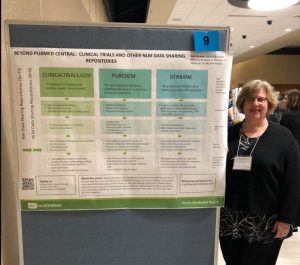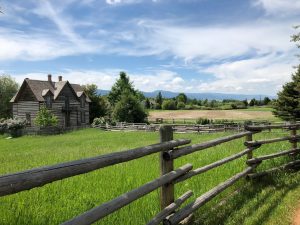Jul
11

Posted by Ann Glusker on July 11th, 2018
Posted in: Blog, Data Science, News From NNLM PNR, Technology, Training & Education
Tags: Bozeman, conference, Data_Science, open repositories
You may have seen the feature on the front page of our website, “Where in the World are the PNR Coordinators?” But, we don’t always report back on our travels! So, here is a quick view of a conference I attended on behalf of the NNLM-PNR, that took place in Bozeman, MT last month, called “Open Repositories 2018”. What is an open repository? I like this definition from the “Repositories Support Project”:
“A digital repository is a mechanism for managing and storing digital content. Repositories can be subject or institutional in their focus. Putting content into an institutional repository enables staff and institutions to manage and preserve it, and therefore derive maximum value from it… Repositories use open standards to ensure that the content they contain is accessible in that it can be searched and retrieved for later use.”
I don’t work with repositories directly, so this conference was basically like drinking water from a fire hose. The attendees were a mix of librarians/library staff and people from the IT side of running repositories, meaning that my comprehension of a given session could range from about 5% (for the very techie ones) to 100%. And that was fine—I got a great introduction to the issues involved in starting and running repositories, and learned about some new trends, some areas of conflict and some growing pains (hence the title of this post). For example, take a look at this presentation by Peter Sefton. I pretty much understand the whole section above the picture of the boat, and then an average of about 65% of what’s below it; that feels worth it to me! It was an international conference, so the perspective on how repositories are handled was global. I would never otherwise have heard of Australian Sefton’s work, or been able to attend a session on the Digital Repository of Ireland. I even got to spend a full day attending two workshops on Wikidata and Wikipedia editing (did I mention that the NNLM’s next Online Wikipedia Edit-a-Thon is November 7 this year?).
And, one great thing about open conferences and all things open is that you can often gather the content for yourself after the conference even if you didn’t attend it. Here are some options if you want more information about what happened at this conference:
— YouTube stream of everything held in the main session space (including the Digital Repository of Ireland presentation)
I leave you with three photos from the experience. One is of me with my poster highlighting three of the National Library of Medicine’s eight data sharing repositories: ClinicalTrials.gov, PubChem and GenBank. And the other two are from my visit to the Museum of the Rockies, which features the most amazing dinosaur exhibit I’ve ever seen, and a thing I love—a historic house which was moved to the museum site, furnished appropriately to the period in which it was built, and staffed by costumed and knowledgeable living history interpreters.


